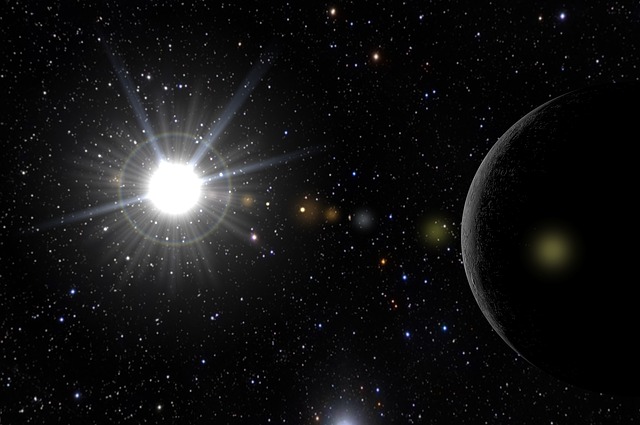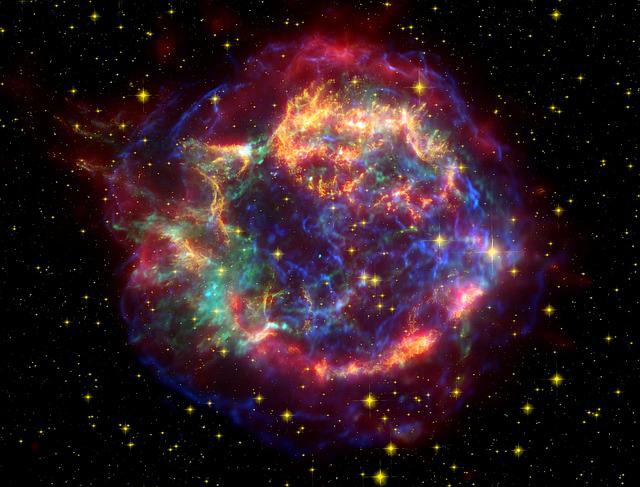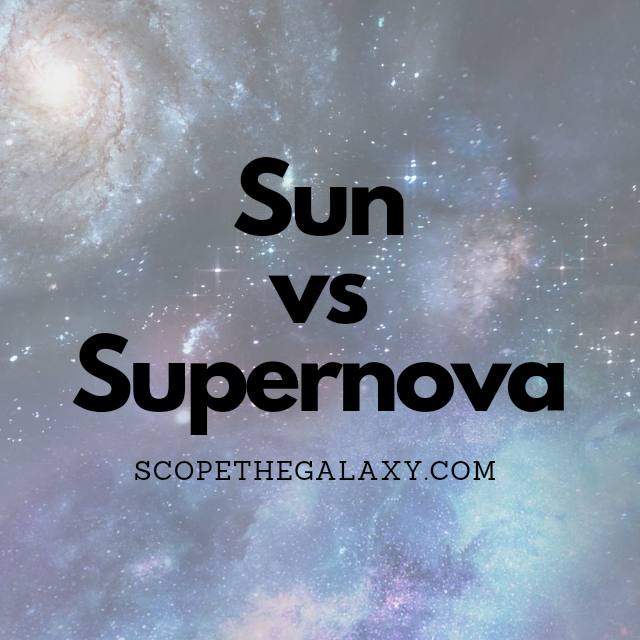*This post may contain affiliate links. This means we may make a commission if you purchase an item using one of our links*
The sun and supernova are completely different from one another as a supernova is the violent explosion that occurs after a large white dwarf or large star dies, whereas the Sun is an active main sequence star. As the Sun isn’t a larger star between 8 – 50 solar masses it won’t experience a supernova explosion.
For a more thorough breakdown of the Sun and supernovae as well as the plethora of other differences between these two celestial entities, continue reading.
What Is The Sun?
Table of Contents

The Sun is the bright, celestial entity at the centre of our solar system and is also a star that falls under the G type main sequence star bracket (also called a yellow dwarfs), all of which are medium sized stars that tend to be around 0.84 – 1.15 solar masses.
Our Sun is 1 solar mass, making it a medium sized medium star. It’s also on the brighter side for a yellow dwarf, the color that it emits is white in color as opposed to the slightly yellow color that less luminous yellow dwarfs would be.
Of course we still see the Sun as yellow or even red on Earth but, the reason for this significant color shift is because our atmosphere scatters and breaks up the photons that reach us, ultimately changing the true color of the light rays from white to the yellow, orange or red colors we see in our day to day.
As it is a star, the Sun will actively convert the hydrogen elements at its core into helium, through a process called nuclear fusion.
Nuclear fusion is the reason why it generates light and produces the energy we receive, helping us power machinery, technology, grow crops so on and so forth.
The process of nuclear fusion also affects how hot our star burns, hitting temperatures of 6000°C on a day to day basis. This will be the case for another 4.5 – 5 billion years until it’s unable to convert hydrogen into helium.
Once hydrogen cannot be converted, an imbalance between the inward and outward forces keeping the Sun together will occur, causing an imbalance which would result in our Sun bloating up many many times its current size.
When this happens it will enter its red giant phase, where it’ll be around 256 times larger than it is now.
This phase will last for around a billion years until it sheds it mass through a process called planetary nebula, leaving behind only a dead white dwarf remnant.
What Is A Supernova?

Black holes and neutron stars are what remain after a supernova explosion occurs, which in turn means that this explosion is the process followed when a star dies. It will then be classified as a type 1 supernova if it leaves no hydrogen line emissions in the spectra and would be type 2 if it does produce hydrogen line emissions when a star dies.
There are two ways that a supernova explosion can form.
It can either be via a white dwarf in a binary star system that accumulates too much energy from its companion star causing it to explode or when a larger star runs out of nuclear fuel and collapses under its own gravity, leaving behind the bright and grandiose remnants of this explosion many times brighter than even its own galaxy.
As stated above supernovae are generally split into 2 types, a type 1 supernova or a type 2. Type 1’s are then further split into 1 of 3 subcategories, whether Ia, Ib or Ic.
A type 1a supernova is the most commonly observed in outer space and acts like a candle light to help us observe distance across the deep unknown.
These are theorised to form after a white dwarf, likely in a binary star system, exploding due to the over consumption of energy from its companion. Type Ia’s have a strong silicon absorption line near its maximum luminosity whilst producing no hydrogen at the same time
Type Ib’s are formed after a large star collapses under its own core gravity where the outer region of the stars hydrogen is stripped away, leaving behind only second layer of helium that remains.
Type Ic’s lack both the hydrogen and helium layer when they explode, although the difference here has been debated as not being significant enough to differentiate a type Ib from a Ic.
Type 2 supernovae are formed when a star between 8 – 50 times the Sun’s mass collapses into itself and causes a huge explosion either producing a neutron or a black hole if the materials left behind exceed 3 – 4 solar masses.
In essence anything above 20 times the size of our Sun can potentially result in a black hole whilst a star that is 1.44 solar masses or between 10 – 20 times the mass of our Sun would produce a neutron star instead.
Can The Sun Go Supernova?
Theoretically speaking our Sun will not go supernova. This is because it simply does not have enough mass to constitute a violent supernova explosion. Instead it will go through its red giant phase before dwindling in size through the planetary nebula process, shedding its mass and turning into a white dwarf.
As explained above white dwarfs do have the potential to go supernova however, they also require an excess of energy, generally from another star to achieve the needed solar mass of 1.44 before it can even go through this process.
Now taking into account that the Sun is currently not part of a binary star system, it’ll be very difficult for even its stellar remnant to go supernova.
Similarities Between The Sun And Supernova
In reality the Sun and supernovae have nothing in common.
The only similarity you could say between the two is that supernovae can occur through white dwarfs which the Sun is likely to become at the end of its lifespan.
Differences Between The Sun And Supernova
In regards to the differences, they are quite vast so I’ll cover them below:
- A supernova explosion occurs when active stars between 8 – 50 solar masses explode or white dwarfs reach a solar mass of 1.44. The sun is only 1 solar mass therefore, it does not even meet the lower mass necessary to begin this explosion process
- The Sun is still an active star whilst supernova explosions only occur when a star is unable to continue converting the hydrogen elements at its core or shell to helium via nuclear fusion.
- Supernovae can outshine entire galaxies whilst the Sun cannot.
- Our sun burns at around 6000°C whilst supernovae can burn in the billions of degrees.
- Supernovae will generally stick around for a few months at most whilst the Sun is estimated to have a 10 billion year lifespan in total.
- When the Sun dies it will only leave behind a white dwarf remnant whilst supernovae can form into neutron stars or black holes.
- Supernovae leave behind a dust cloud of matter whilst the Sun can’t do this as it is still active.
Summary
Supernova explosions and the sun are very different from one another as supernova is the conclusion to a stars active life whilst the Sun is an active yellow dwarf star. Therefore, it’ll be a constant existence for billions of years whilst a supernova will die down within a few months.
As a whole both are completely different phases within the life cycle of a star, with a supernova specifically reserved for stars roughly 8+ times more dense in mass than the Sun.

